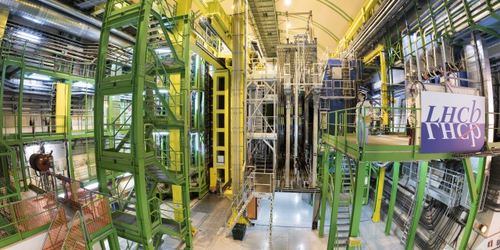Two’s a Charm for LHC
The subatomic realm welcomes a couple of new family members as researchers at the Large Hadron Collider beauty (LHCb) experiment report the discovery of two—possibly three—new baryons. The result could help physicists better understand how quarks bind together to form subatomic composite particles. It could also enable tests of predictions from the theory of quantum chromodynamics.
To find these excited states, the LHCb team looked for decay products in high-energy proton collisions. The excited states quickly decayed into a kaon and a Lambda-c baryon, , which in turn broke apart into another kaon, a proton, and a pion. By cataloging the tracks and momenta of the decay products from millions of such collisions, the team inferred the fleeting presence of three excited states of the Xi-c baryon ( ), named for their energies in MeV: , , and . These states are composed of one charm quark and two other lighter quarks, most likely a down quark and a strange quark. While the two lower-energy states are new, the third may be the same as the previously observed excited state, .
The team notes that the energy spectrum seems to share some similarities with yet another baryon, Omega-c ( ), suggesting that these two baryons are related (see Synopsis: Five Charming New Baryons). To test this idea, the team plans to measure the quantum numbers of the baryons, which requires observing the simultaneous decay of the baryons into three decay products.
This research is published in Physical Review Letters.
–Christopher Crockett
Christopher Crockett is a freelance writer based in Arlington, Virginia.




